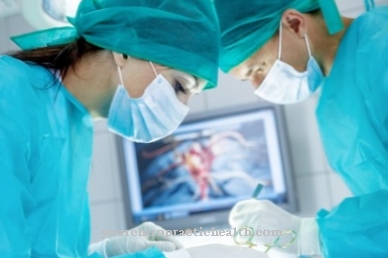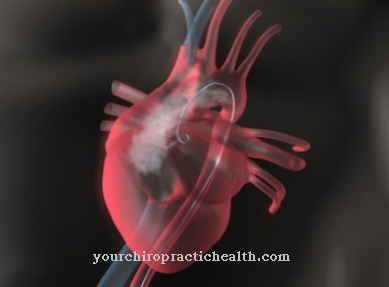Shiatsu is a Far Eastern, holistic healing method which is also gaining more and more supporters in Europe.
The special pressure massage technique is applied according to the overarching principles of traditional Chinese medicine, TCM. Similar to other healing methods from the Far East, such as acupuncture or acupressure, the use of Shiatsu is not uniform, but is subject to certain modifications.
What is Shiatsu?

According to the meridian system of TCM, the pressure points to be treated are distributed over the entire surface of the skin, also in the abdomen and on the extremities.
Which pressure points are treated for how long, with which pressure and with which technique, depends on the type and intensity of the complaints with which a patient visits a Shiatsu therapist. According to the teachings of TCM, every illness is without exception the result of a disturbed flow of the life energy Chi on the meridians as energetic pathways. Most of the acupuncture points are located on these energy lines. Shiatsu's pressure point massage can specifically influence the disturbed vital energy and correct errors.
To this day, however, it is not scientifically proven whether the meridian system and thus the individual pressure points, which in many cases correspond to the acupuncture points, even exist. Shiatsu has certainly already helped many people to become pain-free again, to be more flexible or to alleviate other symptoms. Since Shiatsu sees itself as a holistic method that always focuses on the unity and harmony of body, mind and soul of a patient, the range of indications is correspondingly broad.
Function, effect & goals
Shiatsu is not a massage in the classical sense, but always works according to the Chinese meridian theory. Due to the positive influence on the life energy, Shiatsu stimulates the flow of energy and thus contributes to mental and physical balance. Shiatsu is also expressly suitable for prevention. If Shiatsu is used for preventive purposes, then at this point it is a form of body work in the area of general health promotion.
Many of the pressure points can also be treated on your own, without the need for a therapist.Because the activation of the Shiatsu pressure point massage can to a certain extent be easily learned by medical laypersons and used for self-treatment. According to old Japanese tradition, the treatment takes place on a floor mat, the patient wears soft, non-restrictive clothing. Ideally, the Shiatsu massage takes place along the body's energy conduction pathways from head to toe with knees, elbows, thumbs and palms, while only the fingertips of the hand are used for self-treatment. Loosening mobilization of individual joints and stretching exercises are also part of a Shiatsu session, which usually lasts 60 to 90 minutes.
The statutory health insurances do not cover the costs for a Shiatsu therapy because of the lack of scientifically evidence-based proof of effectiveness. Shiatsu therapists approved in Germany are either specially trained physiotherapists, alternative practitioners or doctors. The so-called attentive listening during a Shiatsu treatment is important, which means a kind of touch communication without verbal exchange. A verbal conversation or speech can seriously disrupt the success of the Shiatsu treatment. As a gentle, yet profound and versatile method of body work, Shiatsu has very different effects that can last for a long time after a treatment.
The modern way of life with stress, tension, lack of exercise and poor nutrition often leads to energy blockages that can manifest themselves in a wide variety of psychological and physical illnesses. Shiatsu can help to increase one's own life energy, reduce stress and calm down, promote inner relaxation or better master relationship and life crises. In a deeper sense, Shiatsu should encourage people to better discover and explore oneself, to stimulate self-healing powers and to be able to enjoy more well-being.
Shiatsu is practiced with mindfulness, openness, respect for the person being treated and also a lot of sensitivity. It also serves as prophylaxis in many respects and also as a sustainable support for medical recovery processes. Even severe pain syndromes of the musculoskeletal system can be relieved or even cured in the long term.
You can find your medication here
➔ Medicines for relaxation & nerve strengtheningRisks, side effects & dangers
Shiatsu is basically suitable for people of all ages; even babies and pregnant women can be treated successfully with the gentle pressure point massage. The real art is that the Shiatsu therapist adjusts precisely to the current individual energetic state of a patient, which not only requires anatomical-physiological background knowledge, but also the necessary experience.
Human touch, stretching and massage always have profound effects on well-being and body awareness. Sensitive people can experience such an uncontrolled burst of emotions with crying and trembling during a Shiatsu massage. The treatment should then be discontinued first.
If Shiatsu is used properly, there are usually no harmful side effects to be expected. However, patients suffering from severe mental illness should not undergo Shiatsu treatment. Because the risk of violent emotional outbursts is high, especially in traumatized people. A comprehensive anamnesis should therefore take place before each session.
Patients should also always view Shiatsu treatment as an accompanying measure for general health promotion so that serious illnesses are not overlooked. Patients with extensive inflammatory reactions to the skin and mucous membranes should also not be treated with this method. The pressure point massage may only ever be performed on the intact, intact skin.



.jpg)







.jpg)


.jpg)










.jpg)
